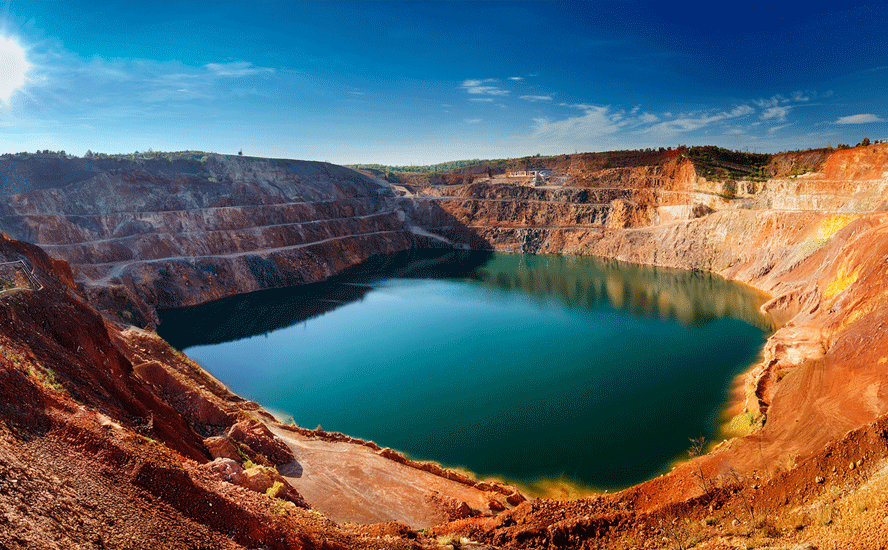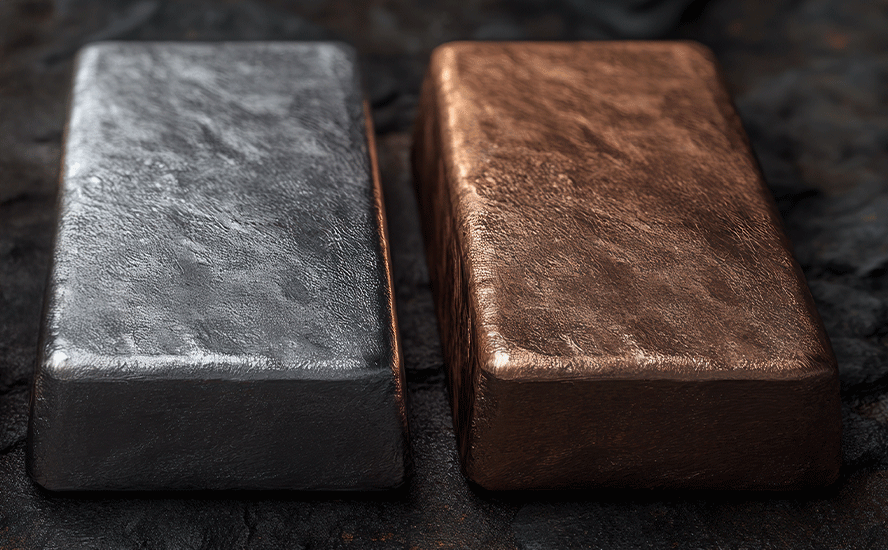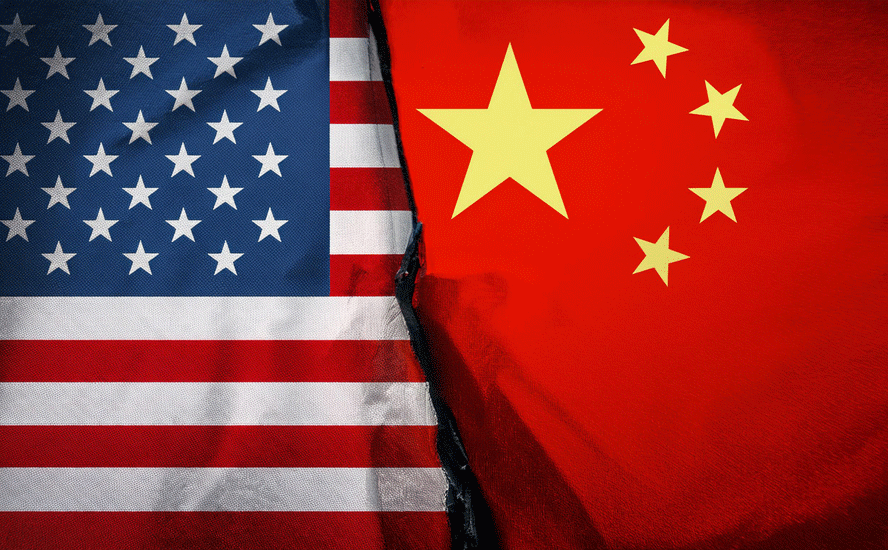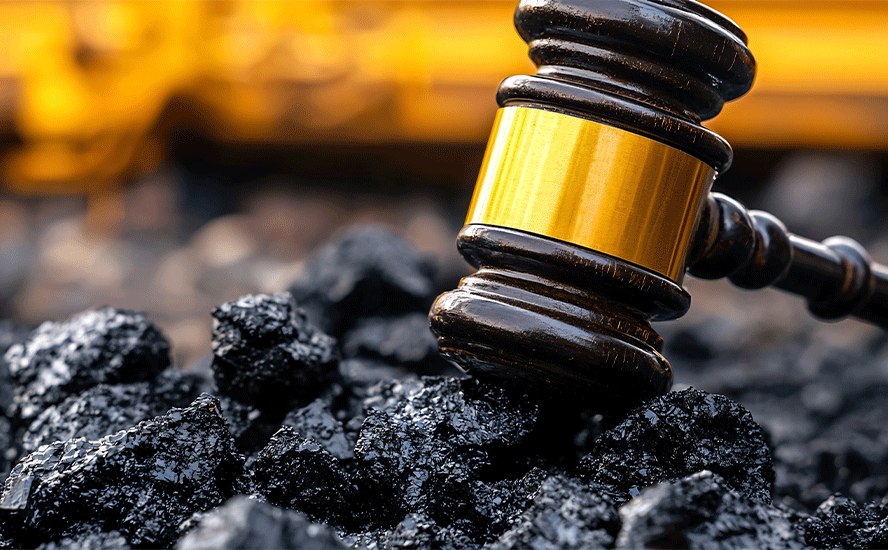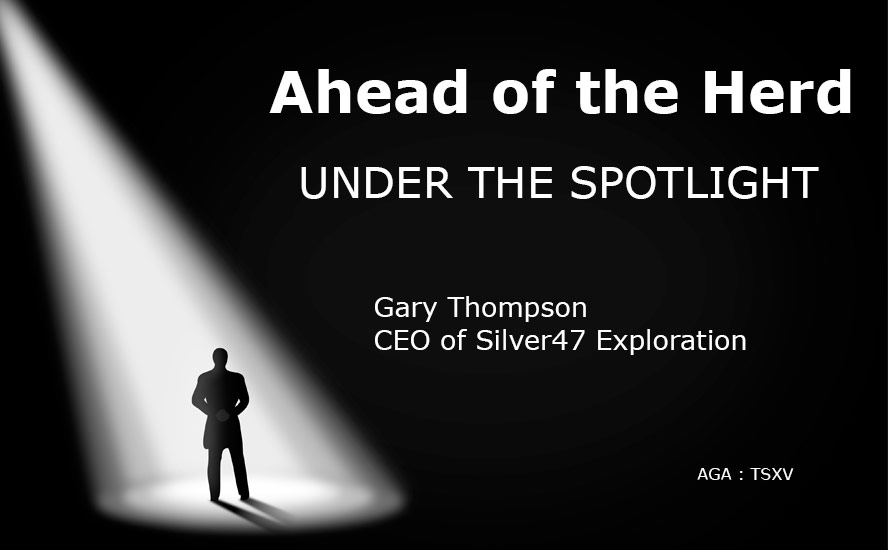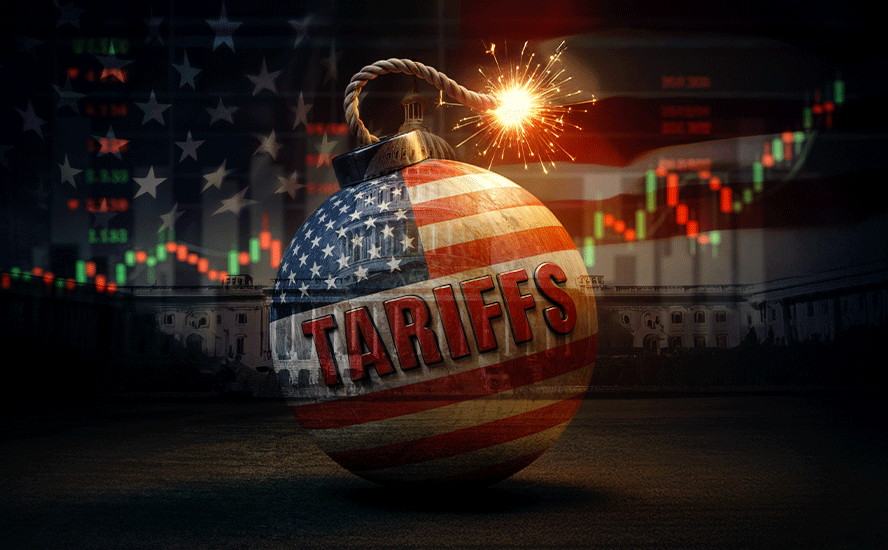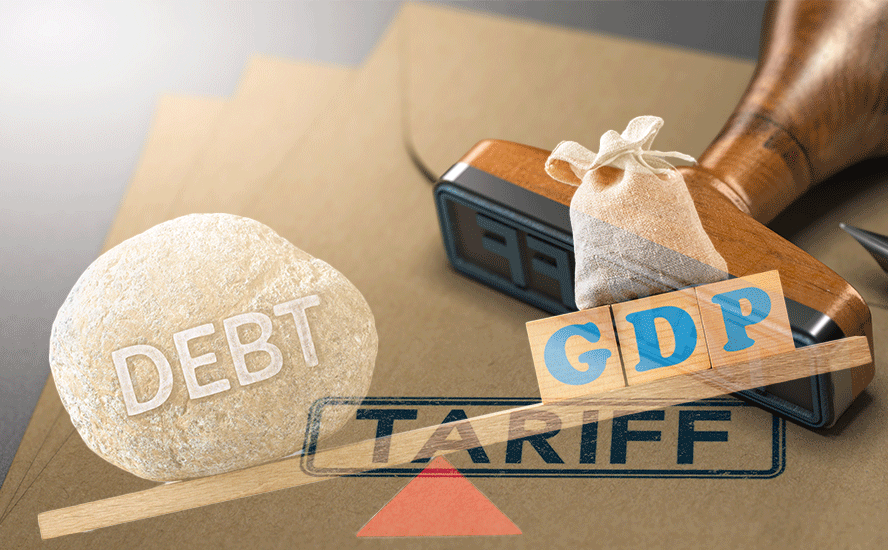The bull market hiding in zinc’s shadow inventories
2021.02.13
Despite zinc’s low profile among resource investors, it is the fourth most mined metal. While zinc’s primary use is to stop steel from rusting, other applications are shoring up demand. Adding zinc to fertilizer increases soil productivity, and there is research being conducted to develop a nickel-zinc battery for use in electric vehicles. Zinc, of course, is already used in alkaline batteries.
Zinc is also used heavily in infrastructure build-outs. This includes desperately needed bridges, public buildings, power stations, dams etc. in the US, much of the developing world, and China’s Belt and Road Initiative which along with needing millions of tonnes of copper, is going to require a lot of galvanized steel containing zinc.
Zinc alloys including brass are used in corrosion-resistant marine components and musical instruments, to name a couple of more applications.
According to the US Geological Survey, in 2020 the top zinc-producing countries were China, Australia and Peru. Total mine production was 12 million tonnes. From 250 million tonnes of global reserves, Australia has the most zinc at 68Mt, second is China at 44Mt, with Mexico and Russia tied for third place at 22Mt. About 1.9 billion tonnes of zinc resources have been identified throughout the world.

Zinc had a banner year in 2017, climbing 38% (between 2016 and 2018 zinc rocketed 132%) due to speculation that the world’s zinc mines would be unable to meet demand.
Over the years, some very large zinc mines have been depleted and shut down, with not enough new mine supply to take their place. MMG’s shuttered Century mine for example used to supply 4% of the world’s zinc. Between the closure of the Lisheen mine in Ireland, Century, and Glencore’s Brunswick and Perseverance mines in Canada, over a million tonnes was ripped from global zinc production.
The closed mines represent an estimated 10 to 15% of the zinc market. On the flip side, there have been few discoveries or big zinc projects planned. This set the zinc market up for a supply shortage.
However, despite falling inventories, the base metal had a reality check in 2018. US-China trade war worries weighed heavily on the entire base metals complex including zinc, which tanked around 24%.
2019 started off well for zinc, reaching $1.63 a pound in February, but once US President Trump hit China with billions in tariffs, base metals investors ran scared. The galvanized sheet trade, for example, was hit with 25% steel tariffs. Prices drifted down to $1.00/lb by October 2019, then traded between $1.00 and $1.20 until the arrival of covid-19 convulsed global markets in early spring, 2020.

The pandemic initially crimped zinc demand, but a combination of constrained supply and strong demand from China squeezed the market from an expected surplus to a pronounced deficit in 2020; this was reflected in higher prices.
For the first 10 months of the year, the International Lead and Zinc Study Group (ILZSG) registered a refined zinc deficit of 480,000 tonnes — a complete turnaround from the 620,000-tonne surplus the group predicted for 2020, and another hefty 463,000-tonne surplus for 2021.
The main factors behind the deficit were the closure of Vedanta’s 250,000 tons per annum Gamsberg mine in South Africa (since re-opened) following a serious accident; the collapse in Chinese smelter charges to two-year lows (under $100/ton) as operators competed for concentrates said to be in short supply; and China zinc buying (zinc fell into the Chinese stimulus narrative — higher steel demand meant lots more zinc needed to make galvanized construction beams, bars and appliances), although a Reuters article notes that China has had no need to soak up the world’s excess supply of zinc, as it did for copper and aluminum. Net imports of of 332,000 tons in the first nine months of the year were 24% lower than 2019 and the lowest January to September tally since 2015.
Zinc and its sister metal lead, have also been hard hit this year by quarantines affecting output in key supplier countries, such as Peru, Bolivia and Mexico.
From a March low of $0.83/lb, zinc prices climbed to $1.29 in December, making zinc bulls happy as the calendar turned to 2021, but the heat of the market soon cooled faster than a polar bear dip on New Year’s Day.
At the end of January, zinc prices dropped to a three-month low after a quarter billion dollars worth of the metal suddenly appeared in London Metal Exchange (LME) warehouses.
According to Metal Bulletin, on Jan. 26 and 27, 105,800 tonnes of zinc was delivered to US and southeast Asia LME port locations, bringing total inventories on the bourse to the highest since mid-2017. The exchange’s three-month zinc contract plunged to $2,552 per tonne, before recovering slightly to $2,573/t ($1.16/lb) on Friday, Jan. 29.


So, what’s with these shadow inventories and what do they mean for the zinc market? A repository of surplus zinc has been rumored for years. Basically, LME shadow stocks are “off warrant” metal, that is being stored with the option of delivery to the exchange. Shadow stocks don’t show up in the LME warehouse registered stock totals, that indicate supply of stored zinc and other metals.
How can we tell if shadow stocks are a factor in the zinc supply? Well, we know that LME registered stocks rose by 189,000 tonnes last year and from the LME’s new “off-warrant” stocks report, a monthly count of shadow stocks, there was an additional 71,650 tonnes parked there between February and September. Reuters cites Glencore’s San Juan de Nieva refinery in Spain, where production continued but exports dropped sharply, inferring, says the article, a missing 122,466 tonnes sitting in storage.
Moreover, can it be a coincidence that, at the end of January, LME zinc stocks jumped to a three-year high of 294,000 tonnes, thanks to the arrival of 106,000 tonnes of mysterious zinc over two days? Close to the same amount of zinc that had “gone missing” in Spain? It seems highly unlikely.
The more interesting question, is how significant are these recent zinc “dumps” on the LME to the wider market? If we take the (rounded) 72,000 tonnes of shadow stocks between February and September, and add the 106,000 tonnes packed into warehouses at the end of January, we end up with 178,000 tonnes. Total zinc demand in 2020 was estimated at 14 million tonnes. Breaking that figure down, we get a daily 38,356 tonnes. Dividing 178,000 by 38,356 gives us 4.6 days, ie., the shadow zinc stocks that have infiltrated the zinc market and knocked zinc bulls for a loop, only represent about 4 days of zinc demand. In other words, a pittance.
Now, we have no way of knowing how much excess supply is out there, waiting to go on warrant and get included in LME warehouse totals, but we can be pretty sure it isn’t enough to have a major impact on the supply-demand picture.
We aren’t the only ones thinking that zinc is in for a good year. The ILZSG predicts a rebound in refined zinc output this year to 13.15 million tons, and a rise in demand to 13.52Mt, suggesting the market will remain in deficit.
In December the Northern Miner quoted Carlos Sanchez, the CPM Group’s director of commodities and asset management, who forecast zinc to trade at $2,628 per tonne ($1.19/lb) in 2021, up 17% from the average price in 2020. In 2022, the galvanizing metal should rise 8.7% from 2021 prices, to $2,857/t, or $1.29/lb.
In fact the zinc bulls already seem to be back in charge. For the week ending Feb. 12, zinc soared 7%, rising the most among the LME’s base metals complex, bettering copper, lead aluminum and tin. Supporting the weekly price rise were outflows of 6,100 tonnes from LME zinc warehouses.
Demand for zinc is expected to pick up after the end of the Chinese New Year next week, and as far as we can tell at AOTH, it can only grow stronger.
Like copper, zinc is an important metal for civil infrastructure renewal. The International Zinc Association explains that “Galvanaized steel is one of the strongest construction materials in existence and has been used for centuries in the building of bridges, buildings and other structures.”
US President Biden is already planning what we think will be a major infrastructure spending package, aimed at the country’s crumbling freeways, bridges, airports and water systems.
On Thursday Biden reportedly met with four senators from both sides of the aisle, to discuss a potential infrastructure program, warning that if the US does not address the problem, China is “going to eat our lunch.”
The President was prompted to call the meeting following a telephone call with Chinese President Xi Jinping, during which the two discussed the urgent need for investments in rail, roads and labor. Biden clearly believes the issue is bipartisan, stating, “I’ve been around long enough … that it used to be that infrastructure wasn’t a Democrat or a Republican issue. There are not many Republican or Democratic roads and bridges,” The Hill quoted him saying in the Oval Office.
As a presidential candidate, Biden promised over a trillion dollars for infrastructure, including a $50 billion investment in repairs to roads and bridges and $10 billion for transit construction. We think it’s highly unlikely that Biden will settle for less than the $2 trillion Trump floated on an infrastructure bill during his term, that never made it past the White House. Biden’s plan could be double that.
Remember, Biden is a tax and spend Democrat firmly in the pocket of the party’s progressive left, which doesn’t care about debts and deficits because it follows the twisted logic of Modern Monetary Theory (MMT).
Beyond the United States, there is China’s Belt and Road Initiative (BRI), consisting of a vast network of railways, pipelines, highways and ports that extends west through the former Soviet republics and south to Pakistan, India and southeast Asia. BRI requires millions more tonnes of zinc, along with other key infrastructure metals such as copper, nickel and aluminum.
In Europe, the EU wants to spend its way out of the pandemic, leading with a “green recovery” pledge worth 550 billion euros. Among the projects that could benefit from the funds, are low-carbon steel production in Sweden (steelmaking represents about half of zinc consumption) and an EV battery factory in Poland.
The bullish case for zinc, then, is clearly bolstered by the green and blacktop infrastructure projects that haven’t even begun to be rolled out.
According to Fitch Solutions, higher zinc prices are encouraging investments into a pipeline of new projects in 2021. While China has always been the world’s biggest producer of the metal, the firm sees mine production stagnating there over the coming years on declining ore grades and environmental concerns.
Tinka Resources Ltd. (TSXV:TK, OTCPK:TKRFF)
This paves the way for Peru, the second-largest zinc producer and the top producer of concentrates. While Peru’s zinc sector is dominated by the Antamina operation, Fitch sees more projects – namely Tinka Resources’ (TSXV:TK, OTCPK:TKRFF) Ayawilca project – coming online shortly.
“Ayawilca contains one of the higher-grade zinc resources anywhere in the world, and we are very excited to see zinc prices reflect the lack of significant new supply. We strongly believe that Ayawilca is perfectly positioned to take advantage of current positive market sentiment towards base metals,” Dr. Graham Carman, Tinka’s President and CEO, recently stated in a press release.
Tinka’s flagship Ayawilca project is located about 200 km northeast of Lima in the Pasco region. The property consists of 16,500 hectares of contiguous claims, along a world-class mining belt in central Peru known for producing base metals.
Ayawilca is a carbonate replacement deposit (CRD), an important style of economic silver-zinc-lead (-copper) mineralization found in the region (mined deposits include the Cerro de Pasco and Morococha mines – see map below).

About 100 km to the north is the giant Antamina Mine (copper-zinc) jointly owned by BHP, Glencore, Teck Resources and Mitsubishi.
Since acquiring its land position at Ayawilca back in 2005, the company has identified three separate mineral deposits at the Ayawilca project: the Ayawilca zinc zone (sulfide), the Colqui silver zone (oxide) and the Ayawilca tin zone (sulfide).
According to the latest resource update (November 2018), the deposits contain an estimated 1.8 billion pounds zinc and 5.8 million oz silver in the indicated category, and 5.6 billion lb zinc and 25.2 million oz silver in the inferred category as sulfides. In addition, there are 42 million lb and 230 million lb of lead resources in the indicated and inferred categories, respectively.
The current 7,500m drill program is fully funded, and the company has about $16 million in cash (as of December 2020) to complete the remaining work. (6,000m has been drilled)
Should all go according to plan, Tinka will fast-track to operations by 2023, producing approximately 140,000 tonnes of zinc concentrate in its first year.
Tinka Resources Ltd.
TSX.V:TK, OTCPK:TKRFF
Cdn$0.26, 2021.02.12
Shares Outstanding 340,740,717
Market cap Cdn$88.5m
TK website
Legal Notice / Disclaimer
Ahead of the Herd newsletter, aheadoftheherd.com, hereafter known as AOTH.
Please read the entire Disclaimer carefully before you use this website or read the newsletter. If you do not agree to all the AOTH/Richard Mills Disclaimer, do not access/read this website/newsletter/article, or any of its pages. By reading/using this AOTH/Richard Mills website/newsletter/article, and whether or not you actually read this Disclaimer, you are deemed to have accepted it.
Any AOTH/Richard Mills document is not, and should not be, construed as an offer to sell or the solicitation of an offer to purchase or subscribe for any investment.
AOTH/Richard Mills has based this document on information obtained from sources he believes to be reliable but which has not been independently verified. AOTH/Richard Mills makes no guarantee, representation or warranty and accepts no responsibility or liability as to its accuracy or completeness. Expressions of opinion are those of AOTH/Richard Mills only and are subject to change without notice. AOTH/Richard Mills assumes no warranty, liability or guarantee for the current relevance, correctness or completeness of any information provided within this Report and will not be held liable for the consequence of reliance upon any opinion or statement contained herein or any omission. Furthermore, AOTH/Richard Mills assumes no liability for any direct or indirect loss or damage or, in particular, for lost profit, which you may incur as a result of the use and existence of the information provided within this AOTH/Richard Mills Report.
AOTH/Richard Mills is not a registered broker/financial advisor and does not hold any licenses. These are solely personal thoughts and opinions about finance and/or investments – no information posted on this site is to be considered investment advice or a recommendation to do anything involving finance or money aside from performing your own due diligence and consulting with your personal registered broker/financial advisor. You agree that by reading AOTH/Richard Mills articles, you are acting at your OWN RISK. In no event should AOTH/Richard Mills liable for any direct or indirect trading losses caused by any information contained in AOTH/Richard Mills articles. Information in AOTH/Richard Mills articles is not an offer to sell or a solicitation of an offer to buy any security. AOTH/Richard Mills is not suggesting the transacting of any financial instruments but does suggest consulting your own registered broker/financial advisor with regards to any such transactions
Richard does not own shares of Tinka Resources Ltd. (TSX.V:TK, OTCPK:TKRFF).TK is a paid advertiser on his site aheadoftheherd.com
Legal Notice / Disclaimer
Ahead of the Herd newsletter, aheadoftheherd.com, hereafter known as AOTH.Please read the entire Disclaimer carefully before you use this website or read the newsletter. If you do not agree to all the AOTH/Richard Mills Disclaimer, do not access/read this website/newsletter/article, or any of its pages. By reading/using this AOTH/Richard Mills website/newsletter/article, and whether you actually read this Disclaimer, you are deemed to have accepted it.


